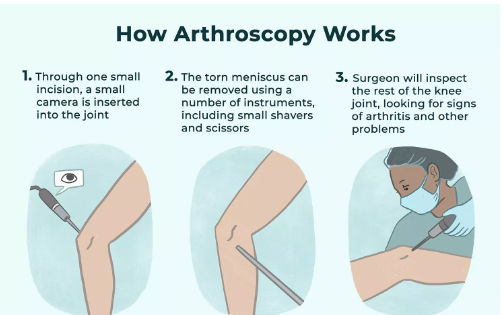by Maria Fernanda Ziegler, FAPESP
Lipid nanoparticles after 5 days of preparation (top) and after 12 months of storage at room temperature (bottom). Images A-B show particles magnified 100,000 times their size; C/D magnified by 60,000x . Credit: Scientific Reports
Thanks to a new injectable formula, Brazilian researchers have succeeded in enhancing the efficacy and prolonging the duration of action of a drug commonly used to treat joint inflammation. The innovation involves lipid nanoparticles containing a high concentration of naproxen, which is gradually released into the affected joint to sustain the desired effect for up to 10 days without the need for repeated administration.
In an article published in the journal Scientific Reports, researchers affiliated with the University of Campinas (UNICAMP) describe their tests of a methodology using the anti-inflammatory drug naproxen in rats with temporomandibular joint (TMJ) inflammation. The TMJ connects the jawbone to the skull.
Temporomandibular disorder is a problem affecting the muscles used in chewing, speaking and other mouth movements.
The lipid nanoparticles encapsulated 99.8 percent of the naproxen. Results of experiments with animals showed that sustained delivery of the drug to the TMJ significantly reduced the migration of defense cells (leukocytes) to the joint for up to a week and induced low levels of the proinflammatory cytokines IL-1β and TNF-α, which are immune response regulators. These results indicated that the inflammation was minimized.
"The enhanced efficacy of the drug in the inflamed joint was due above all to two strategies: gradual release of naproxen by the lipid nanocapsules into the affected region, and administration by injection [rather than orally]. These two factors prolonged the action of the anti-inflammatory drug without undesirable side effects, such as skin rash or stomach bleeding. Moreover, these results were observed in a joint that is not always effectively treated with this drug," said Eneida de Paula, a professor at UNICAMP's Institute of Biology and last author of the article.
According to the researchers, although the model used in the study was TMJ inflammation, a condition that affects some 10 percent of the world population, the innovation has potential applications in the treatment of inflammation in other joints.
Right place
The inflammatory process associated with TMJ disorder results in the release of several pro-inflammatory cytokines and other immune signalers, all of which contribute to joint remodeling, cartilage degradation and maintenance of a painful condition in the affected region.
While nonsteroidal anti-inflammatory drugs (NSAIDs) such as naproxen are commonly prescribed for the treatment of TMJ disorder, their efficacy is usually short-lived, lasting up to two days, and frequent readministration of these drugs is typically required.
"With the new injectable formulation, the anti-inflammatory effect lasts longer, and there are no side effects. The anti-inflammatory drug can be aggressive and cause ulcerations," de Paula said. "Another problem is what's known as first-passage metabolism, where the ingested drug is first metabolized by the liver, preventing the entire dose from entering the bloodstream and weakening the action of the drug."
Intra-articular injection is more efficient when administering medications to treat disorders in the TMJ and other joints, but there are also many disadvantages, such as the need for repeat administrations, which tend to be painful and decrease patient compliance.
"Injection into a joint is too painful to be repeated frequently, so we developed a formulation in which the drug is encapsulated and released slowly. This administration strategy and the prolonged effect eliminate the need for reinjections," de Paula said.
Right choice
The researchers designed the new formulation using factorial planning with the aid of computer software and mathematical models that enabled rational selection of the formulation with optimal deliverability and stability in terms of physicochemical and structural properties.
"The key was choosing the right combination of ingredients to make lipid nanoparticles suited to the drug, considering their biocompatibility and capacity to blend with naproxen," de Paula said. "We already knew we should work with lipid nanoparticles because naproxen is hydrophobic [repels water], but instead of testing all possible combinations we deployed a strategy known as factorial planning, whereby we identified the best variables and selected the ideal composition."
The study, which was conducted in partnership with researchers at UNICAMP's Institute of Chemistry, included the creation of a data matrix. "The first tests were empirical. Their aim was to help us confirm whether we could formulate a nanoparticle that would release the drug gradually inside the joint. Next, factorial planning enabled us to test a large number of combinations of ingredients and rationalize the search for the ideal formulation," de Paula explained.
The new formulation completely encapsulates naproxen, delivers the medication in a controlled manner, and remains stable for a year when stored at 25°C.
Factorial planning has been widely used to develop new drugs and is recommended by the US Food and Drug Administration (FDA). "Drug development is much faster and efficient when this strategy is used, as it lets you analyze different variables simultaneously. We're now looking for a company with which to partner for the purpose of conducting clinical trials, after which the method can be commercialized," de Paula said.
More information: Viviane A. Guilherme et al, Improved efficacy of naproxen-loaded NLC for temporomandibular joint administration, Scientific Reports (2019). DOI: 10.1038/s41598-019-47486-w
Journal information: Scientific Reports
Provided by FAPESP






Post comments